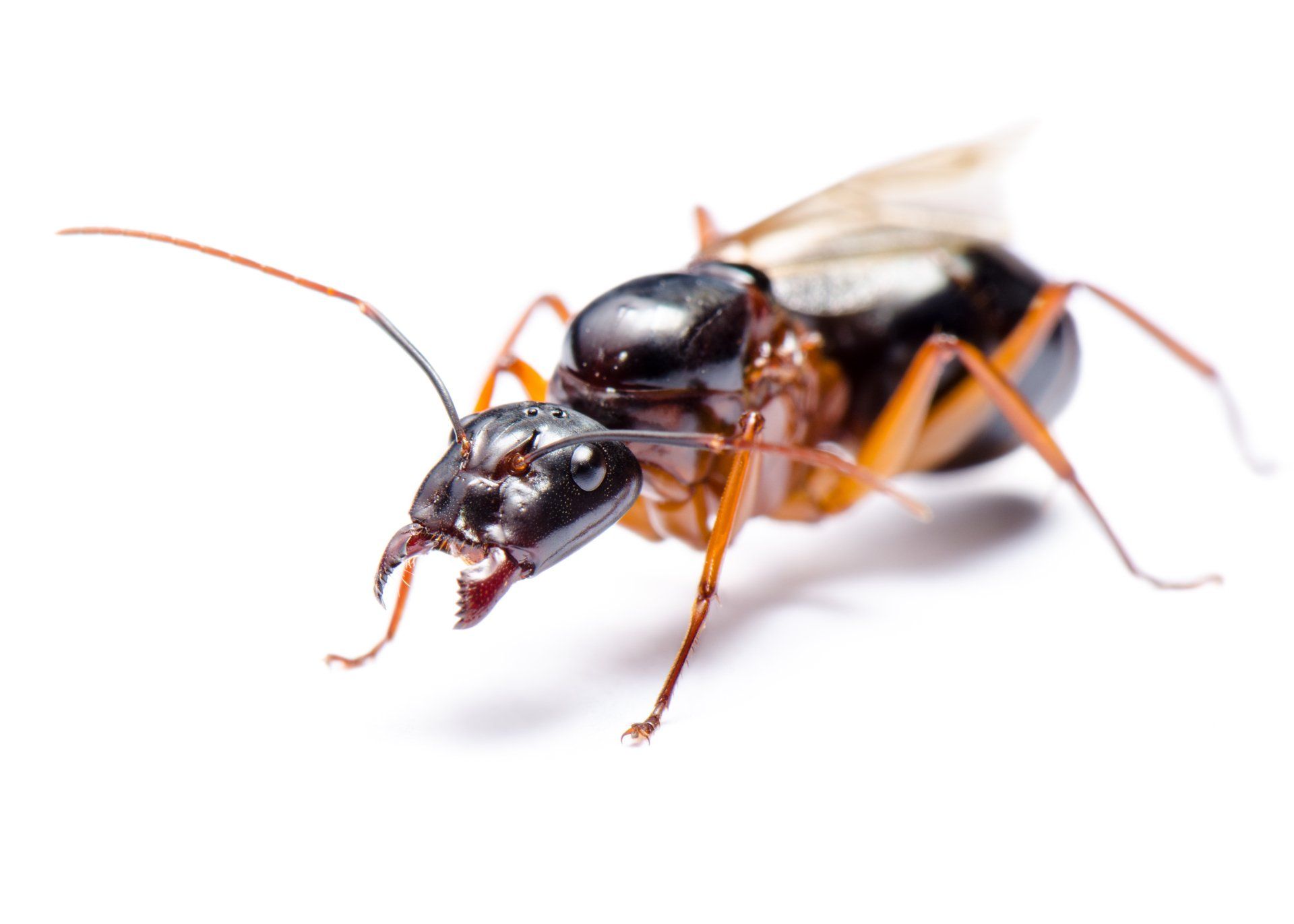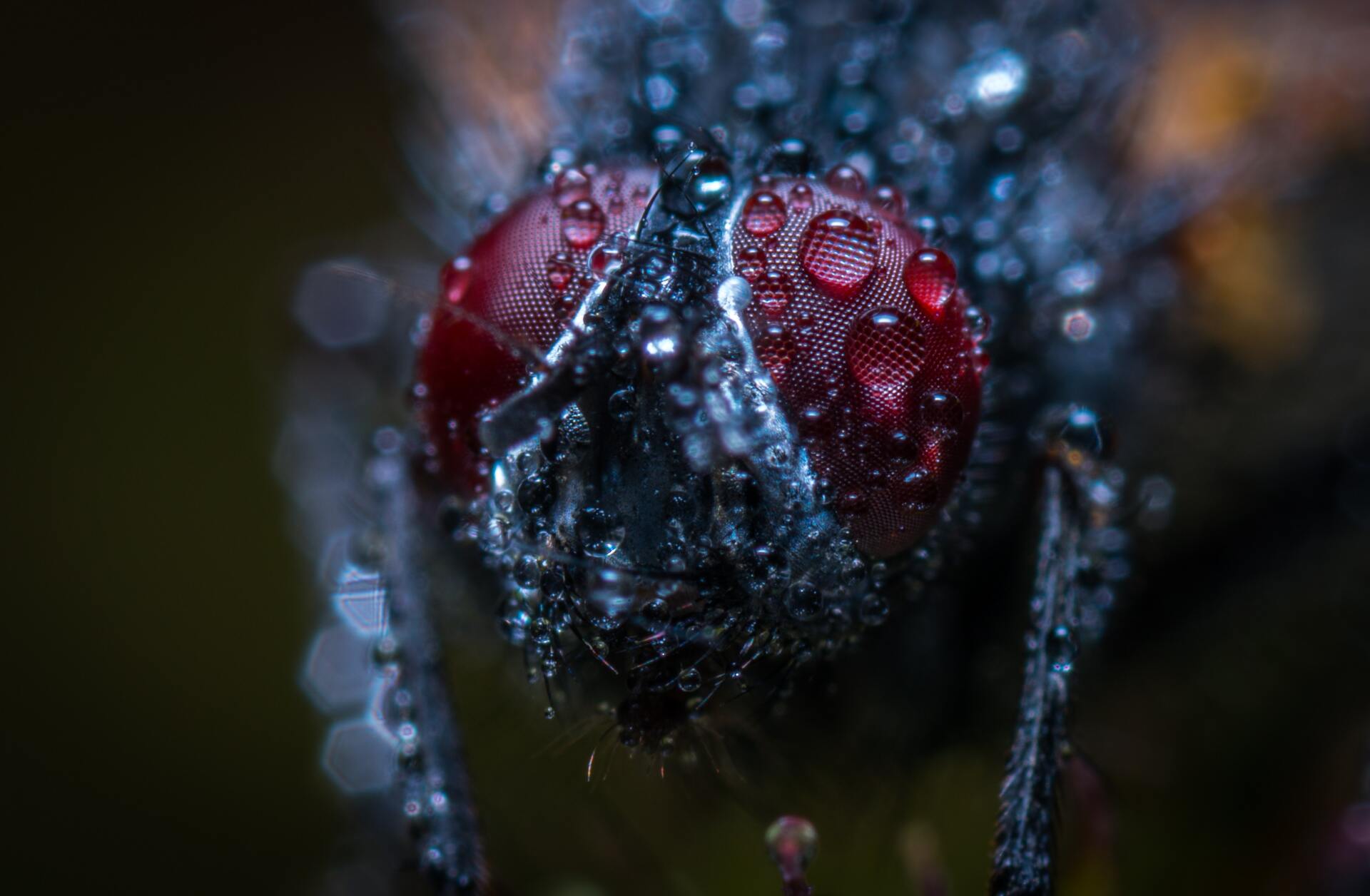Signs of Carpenter Ants
Signs of Carpenter Ants in Your Home

Small insects called carpenter ants are pests because they can ruin the structural integrity of houses, decks, and other buildings. These ants scavenge through your home hunting for any sugars or starches you may have left out on counters or in dishes since they require food sources for their colony. We'll talk about where carpenter ants might be found, what draws them in, and how to keep them from taking over your house in this blog.
Where to Find Carpenter Ants
In the Western New York Region, carpenter ants are a particularly prevalent pest. Carpenter ants would naturally find their way inside our homes given the abundance of many tree species, their extensive root systems, and the woodpiles we use to heat our homes in the winter.
We will start to notice a lot of carpenter ants in the early spring because this is when they are just starting to emerge from their winter slumber and search for food and water. A nesting inside your walls and possible damage to the wood you cannot see could be indicated if you notice them repeatedly inside your house year after year.
What are Carpenter Ants Attracted to?
In an ancient tree, a tree stump, or an underground root system outside the house, carpenter ants first emerge. Workers will be dispatched to locate satellite nests, or subsidiary nests, inside the house when this nest (which we refer to as the colony nest), grows too large.
Carpenter ants frequently seek out:
- windows
- door frames
- bathrooms
- kitchens
Carpenter ants are drawn to damp, soft wood, which is where moisture problems are most prevalent. Carpenter ants will chew up the wood and spit it back out; they do not actually ingest the wood.
When Are Carpenter Ants Most Active?
If a mature carpenter ant colony is located close to your home, you may be at danger of developing an infestation because each nest can contain thousands of ants. Knowing when these ants are most active will help you to prepare your home.
Carpenter ants normally nest outdoors in wet woodland places, but when the weather becomes colder, you may also find them indoors. Even in the early spring when they are waking up and searching for food and water, it is totally normal to observe a few roaming around. However, more than that could mean that there is a nest in your walls.
3 Signs of a Carpenter Ant Infestation
Knowing whether you have a carpenter ant infestation is crucial since they are infamous for inflicting property damage. Here are some typical indications that you might have these pests living inside your house.
Frass
A sawdust substance known as frass, which occasionally appears in basements along the sill plate or even surrounding windows and door frames, is one sign of a carpenter ant infestation. You should be able to see shavings surrounding your house because the ants aren't eating the wood, which could result in an infestation.
Sound in your Walls
Hearing suspicious noises coming from inside your walls is a common approach to determine if you have carpenter ants. Once these pests get into your walls, they can destroy the interior framework of your home and cause you to think you have a termite problem.
Wings
Shedded wings could be another sign of carpenter ants if you notice them about your house. The next phase for the queen is to locate a location to start her colony after she has shed her wings. If you notice discarded wings, it is imperative that you make an effort to locate the nest because this can be a clue that you have a lot of carpenter ants in your house.
How to Prevent Carpenter Ants
Once you can clearly see that you have carpenter ants in your home, you must investigate ways to get rid of them. These may consist of:
Entry Point Seals
Carpenter ants are generally larger than other ant species. However, this does not imply that they can't enter any little cracks and openings in your house. Make sure to seal off any potential entry points into your home by caulking any cracks or openings. To block simple accesses, you may also replace the window screens and door seals.
Keep food in containers and store it properly.
Ants will have a tougher time finding food sources within your property if you keep your home free of spills and crumbs. To avoid leaving a trace of perishables, store food in airtight containers and follow good cleaning procedures. A frequent garbage pickup is also necessary because ants may raid your trash can in search of food.
Properly Store Wood
After all, as we've discovered, carpenter ants enjoy consuming wood. Keep the leftover firewood on raised surfaces so that pests can't easily get it and make sure to dispose of any rotten or contaminated wood that is lying around your home.
Get Professional Assistance
Even when you take all the necessary precautions, carpenter ants can still win. The Eliminator is here to help since we understand that this is hard for you and your family. All of Vermont is serviced by our technicians. Call us at (800) 499-5130 if you or someone you know experiences these events. Carpenter ants are among the pests that we want to make sure are gone from your house.
CONTACT
(800)-499-5130
293 Hill Street,
Lyndonville, VT 05851
MAILING ADDRESS
PO Box 1212, Lyndonville VT 05851
BUSINESS HOURS
- Mon - Fri
- -
- Sat - Sun
- Closed


